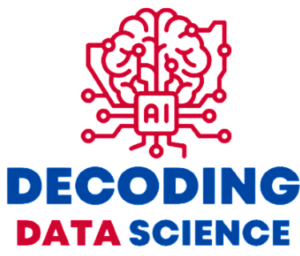As a statistician or researcher, you’ve probably come across the term “p-value” at some point in your work. But what exactly does it mean, and why is it so important in statistical analysis? In this article, we will delve into the definition, calculation, and interpretation of p-values, and how they can impact your research findings.
1. What is a p-value?
In statistical analysis, a p-value is a measure of the evidence against a null hypothesis. It represents the probability of observing a test statistic as extreme or more extreme than the one calculated, assuming the null hypothesis is true.
2. How is a p-value calculated?
The calculation of a p-value depends on the statistical test being used and the null hypothesis being tested. In general, the p-value is calculated by comparing the observed test statistic to a distribution of test statistics under the null hypothesis. The area under this distribution that is more extreme than the observed test statistic represents the p-value.
3. Interpreting p-values
3.1 What does a small p-value mean?
A small p-value (usually less than 0.05) indicates that the observed data is unlikely to have occurred by chance alone, and therefore provides evidence against the null hypothesis. It suggests that the alternative hypothesis (i.e., the hypothesis being tested) may be true.
3.2 What does a large p-value mean?
A large p-value (usually greater than 0.05) indicates that the observed data is likely to have occurred by chance alone, and therefore does not provide sufficient evidence against the null hypothesis. It suggests that the null hypothesis cannot be rejected.
3.3 What is the significance level?
The significance level (also known as alpha) is the threshold used to determine whether a p-value is considered small enough to reject the null hypothesis. It is typically set at 0.05, but can vary depending on the field of study and the nature of the research question.
3.4 What is the confidence level?
The confidence level represents the level of certainty that a true effect exists in the population being studied. It is often reported as a percentage (e.g., 95% confidence level), and is calculated based on the margin of error and sample size.
4. Limitations and misconceptions of p-values
4.1 P-hacking
P-hacking refers to the practice of selectively analyzing data or conducting multiple analyses until a significant p-value is obtained. It is a form of data manipulation that can lead to false positive results and can compromise the integrity of research findings.
4.2 P-value vs. effect size
P-values only provide information on the statistical significance of a result, and do not provide information on the magnitude or practical significance of an effect. It is important to consider effect size in addition to p-values to fully understand the impact of a finding.
4.3 P-value vs. hypothesis testing
P-values are often used as a tool for hypothesis testing, which involves making a decision about the null hypothesis based on the observed data. However, it is important to remember that hypothesis testing is just one aspect of statistical analysis, and should not be used as the sole basis for drawing conclusions.
4.4 P-value vs. scientific significance
P-values only provide information on the statistical significance of a result, and do not provide information on the scientific significance or relevance of a finding. It is important to consider the broader context of the research question and the practical implications of the results.
5. Conclusion
In summary, a p-value is a measure of the evidence against a null hypothesis in statistical analysis. It is calculated by comparing the observed test statistic to a distribution of test statistics under the null hypothesis. Interpreting p-values involves considering the significance level, confidence level, and the size of the p-value. However, it is important to be aware of the limitations and misconceptions surrounding p-values, including p-hacking and the importance of considering effect size and scientific significance.
If you want to learn more about statistical analysis, including central tendency measures, check out our comprehensive statistical course. Our course provides a hands-on learning experience that covers all the essential statistical concepts and tools, empowering you to analyze complex data with confidence. With practical examples and interactive exercises, you’ll gain the skills you need to succeed in your statistical analysis endeavors. Enroll now and take your statistical knowledge to the next level!
If you’re looking to jumpstart your career as a data analyst, consider enrolling in our comprehensive Data Analyst Bootcamp with Internship program. Our program provides you with the skills and experience necessary to succeed in today’s data-driven world. You’ll learn the fundamentals of statistical analysis, as well as how to use tools such as SQL, Python, Excel, and PowerBI to analyze and visualize data designed by Mohammad Arshad, 18 years of Data Science & AI Experience.. But that’s not all – our program also includes a 3-month internship with us where you can showcase your Capstone Project.
